Outline is Representative of Size and Shape:
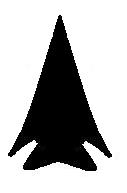
Name Details:
Identified By: David DeJarnette, Edward Karjack, James Cambron
Named For: Lost Lake area, Limestone County, Alabama
Date Identified: 1962
Type Site: Stanfield-Worley Buff Shelter, Colbert County, Alabama
Identified By: David DeJarnette, Edward Karjack, James Cambron
Named For: Lost Lake area, Limestone County, Alabama
Date Identified: 1962
Type Site: Stanfield-Worley Buff Shelter, Colbert County, Alabama
Point Validity:
Valid type
Dejarnette what the first anthropologist hired by the University of Alabama and was an expert on southeastern archaeology. Kurjack studied Alabama archaeology as a graduate student at the University of Alabama and went on to become an expert on Mayan anthropology. Cambron is a distinguished avocational archaeologist that did extensive work in Alabama and the Tennessee River valley. This point was named in a personally published book. This point has been referred to in numerous professional publications and is considered a valid type.
Dejarnette what the first anthropologist hired by the University of Alabama and was an expert on southeastern archaeology. Kurjack studied Alabama archaeology as a graduate student at the University of Alabama and went on to become an expert on Mayan anthropology. Cambron is a distinguished avocational archaeologist that did extensive work in Alabama and the Tennessee River valley. This point was named in a personally published book. This point has been referred to in numerous professional publications and is considered a valid type.
Lost Lake Corner Notch
AKA: Deep NotchCluster: Thebes Cluster
Description of Physical Characteristics and Flaking Pattern:
This is a medium to large (1.5 to 4.5 inches) triangular corner notch point. The cross section may range from elliptical to rhomboid for examples that are heavily re-sharpened and beveled. The blade may range from excurvate to incurvate and are beveled on one edge of each face leaving a serrated edge. The shoulders are barbed and often have a distinctive rounded appearance. The terminal end of the barb may vary from rounded to square. The stem may vary expanding to being only slightly expanding. The base may vary from concave to convex and is thinned using shallow broad flakes and is commonly ground. This point is made using broad shallow percussion flaking with fine secondary pressure flaking along the edges forming a random flaking pattern and usually has a high quality of workmanship and is symmetrical.
Size Measurements:
Total Length - 31 to 81 mm (average 40 to 55 mm), Stem Length - 9 to 15 mm (average 11 to 13 mm), Blade Width - 25 to 48 mm (average 30 to 40 mm), Neck Width - 14 to 20 mm, Basal Width - 15 to 32 mm (average 21 to 27 mm), Thickness - 6 to 13 mm
Total Length - 31 to 81 mm (average 40 to 55 mm), Stem Length - 9 to 15 mm (average 11 to 13 mm), Blade Width - 25 to 48 mm (average 30 to 40 mm), Neck Width - 14 to 20 mm, Basal Width - 15 to 32 mm (average 21 to 27 mm), Thickness - 6 to 13 mm
Commonly Utilized Material:
High quality cherts
High quality cherts
Additional Comments:
Justice places this point in the Thebes cluster. Whatley (2002) feels that this is a variant of the Kirk Corner Notch placing it in the Kirk Corner Notch Cluster.
These points are commonly re-sharpened. The blade is excurvate when new and become more incurvate or recurvate when re-sharpened. Re-sharpening of this point will leave the blade beveled and serrated. In addition, the shoulders may become reduced or become absent with heavy re-sharpening (Granger and Granger, 2013).
Justice places this point in the Thebes cluster. Whatley (2002) feels that this is a variant of the Kirk Corner Notch placing it in the Kirk Corner Notch Cluster.
These points are commonly re-sharpened. The blade is excurvate when new and become more incurvate or recurvate when re-sharpened. Re-sharpening of this point will leave the blade beveled and serrated. In addition, the shoulders may become reduced or become absent with heavy re-sharpening (Granger and Granger, 2013).
Distribution: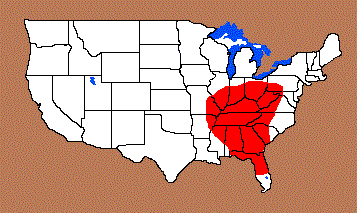
Distribution Comments:
These points are most frequently found in Arkansas, eastern Oklahoma, eastern Kansas, and Missouri. This point may be found in the Ohio River Valley, Tennessee River Valley and into the Gulf Coastal region.
These points are most frequently found in Arkansas, eastern Oklahoma, eastern Kansas, and Missouri. This point may be found in the Ohio River Valley, Tennessee River Valley and into the Gulf Coastal region.
Age / Periods:
Date: 9,500 - 8,500 B.P.
Cultural Period: Early Archaic
Glacial Period: Early to Middle Holocene
Culture:
Date: 9,500 - 8,500 B.P.
Cultural Period: Early Archaic
Glacial Period: Early to Middle Holocene
Culture:
Age Details:
Other points in this cluster / Related / Associated Points:
Calf Creek, St. Charles, Thebes, Thebes E Notch
Calf Creek, St. Charles, Thebes, Thebes E Notch

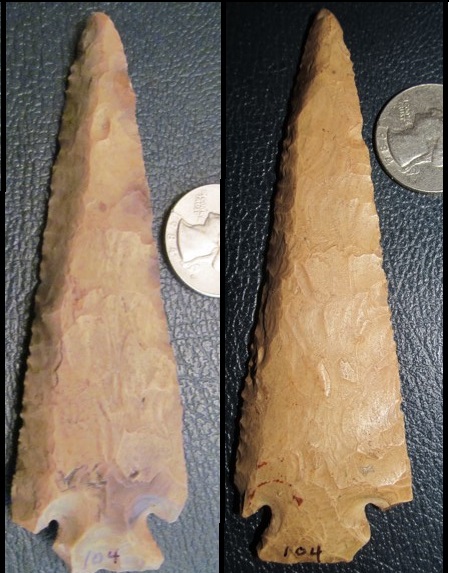
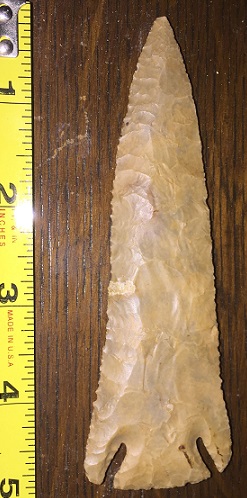
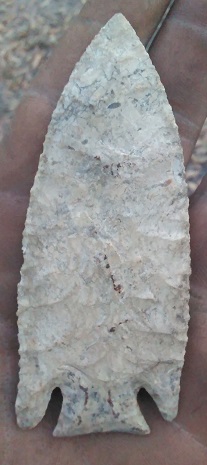
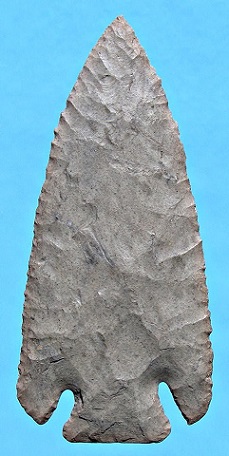
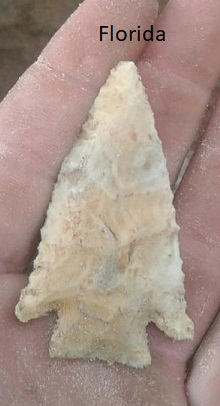
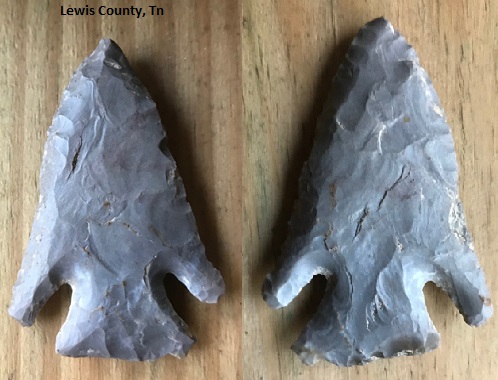
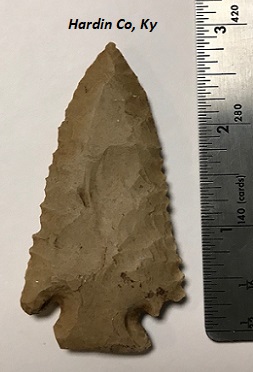

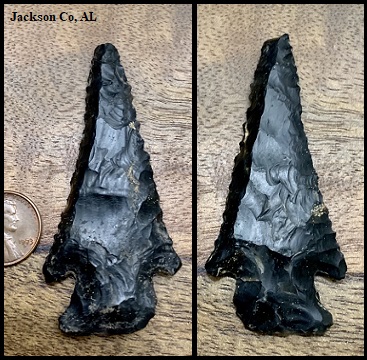
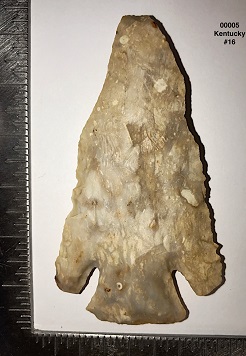
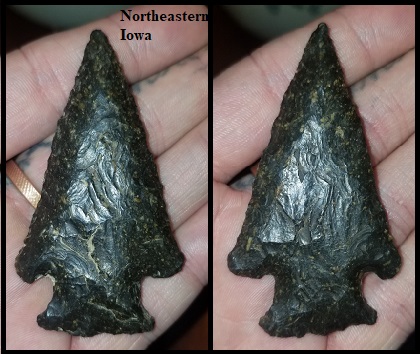
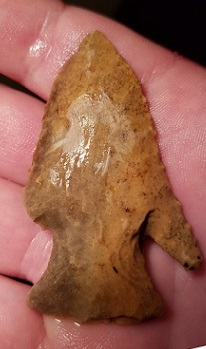
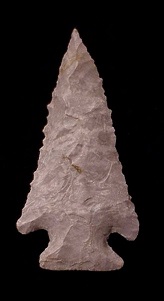
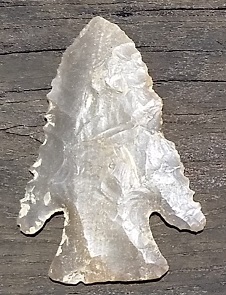
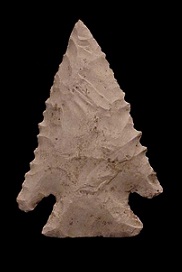

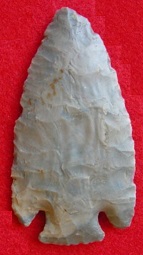
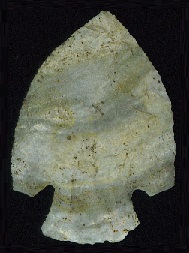

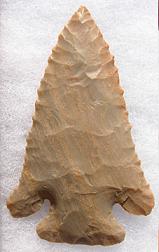
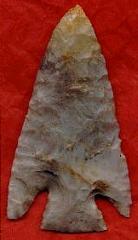
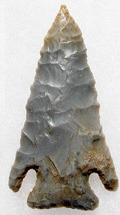
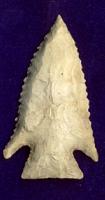

.gif)